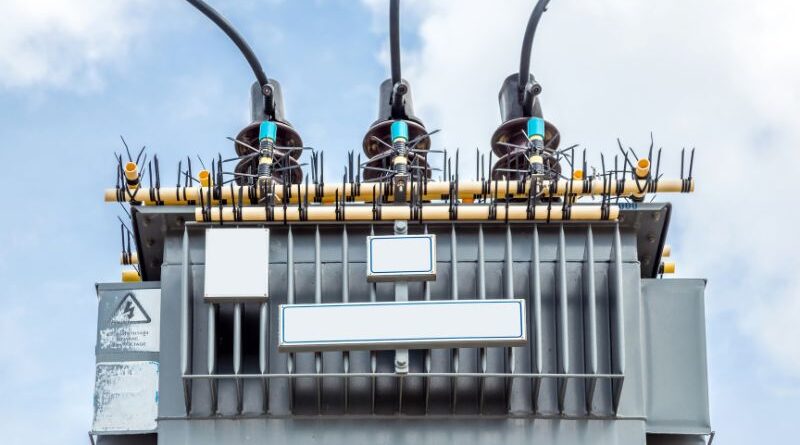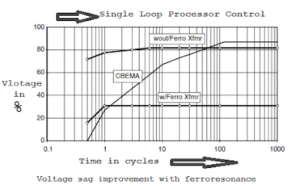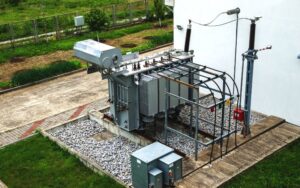
The ferroresonant transformer – CVT Wonder is a testament to human ingenuity and engineering. Through the magic of transducers and isolation techniques, ordinary energy is transformed into an extraordinary spectacle that transcends conventional imagination. As you embark on this voyage of discovery, be amazed by the CVT Wonder's unwavering stability and resilience – a stability that paves the way for a new era of electric power.
Unleash the captivating powers
Unlock your mind and witness the fascinating forces of nature as you explore majestic landscapes, towering waterfalls and vibrant ecosystems that will take your breath away and leave you wanting more.
Revolutionary approach to energy distribution
Experience the perfect fusion of magnetic dominance and technological brilliance as the Wonder Ferroresonant Transformer – CVT revolutionizes the way we harness and distribute electrical energy. Experience the miracle of a stable power supply where fluctuations in input voltage are dampened, ensuring an uninterrupted power supply.
Harmonic convergence
Discover the harmonic convergence of magnetic fields and resonance circuits in the ferroresonant transformer – CVT Wonder. Delve into the depths of this extraordinary wonder and discover how it brings electrical systems to life and provides stable, reliable performance in challenging conditions.
Voltage Drop Conditions
Ferroresonant transformers, also called constant voltage transformers (CVTs), can handle most voltage drops. CVTs are particularly suitable for constant loads with low power. Variable loads, especially with high input currents, represent a major disadvantage for CVTs due to the tuned circuit at the output. Ferroresonant transformers are mainly 1:1 transformers that are excited at high saturation curves and provide a corresponding output voltage that does not vary. significantly under input voltage fluctuations suffers. A typical schematic diagram of a ferroresonant electrical device is shown below.

The figure above shows the voltage breakdown bridge performance of a system regulator powered by a 120VA ferroresonance electrical device. With CVT, the system regulator can survive voltage drops of up to 30% of nominal value, while it can survive up to 82% without voltage drop. However, the performance of the bridge is constantly maintained at a certain level. The reason for this is the system controller's low power requirement of just 15 VA. Ferroresonance transformers must be designed to be significantly larger than the load.

From this figure it can be seen that the allowable voltage drop as a proportion of the nominal voltage (which can result in a voltage of at least 90% at the CVT output) is negligible compared to the load on the ferroresonant electrical device, according with The Manufacturer. At 25% load, the allowable voltage drop is only 30%, which means the CVT can output more than 90% of the standard voltage when the input voltage is more than 30%. This is important because system voltage rarely drops below 30% of nominal value under brownout conditions. As the load increases, the corresponding bridging capacity is reduced, and once the ferroresonant electrical device is full (e.g. 150% charge), the voltage can drop to zero.
Force impulse pulsation

Experience the dynamic “Pulse of Power Pulsation” that propels you toward your goals with unstoppable force, sparking inspiration and transforming you into your best self.
Increased electromagnetic euphoria
Feel the pulse of pulsing energy as the ferroresonant transformer – CVT Wonder reveals its hidden potential. Admire its ability to create a unique electromagnetic euphoria that challenges traditional transformer designs. Experience the symphony of efficiency and reliability created by its flow fusion capabilities.
Protection of sensitive devices
Experience the ferroresonant transformer – the CVT Wonder's unrivaled ability to absorb interference and protect sensitive equipment from the dangers of electrical fluctuations. Discover how it shapes electrical energy and strengthens industry, families and businesses.
Elements in Harmonious Convergence

Frequency and direct current (DC)
The magic core of the Wonder CVT is its DC frequency and synchronization. The orchestrated interaction of these two forces creates a rhythmic cadence that drives the transformative journey. This harmony paves the way for efficient energy distribution and manipulation.
Main materials
Core material selection is critical to the performance of the CVT Wonder. The combination of iron and copper in the core forms the basis of its magnetic performance. The ferromagnetic properties of iron work synergistically with the conductivities of copper, resulting in an excellent balance between magnetism and conductivity.
Coils and wires
Coils and wires wind intricately around the core, creating a maze of paths for energy to flow. These components improve the CVT Wonder's magnetic field, improving its ability to harness and manipulate energy delicately.
Ferrite element
The inclusion of ferrite introduces an additional level of magnetic dominance. The unique properties of ferrite improve the CVT Wonder's ability to oscillate at specific frequencies, further refining the power distribution process.
The role of the inductor
At the center of this miracle is the Inductor – a supreme component that orchestrates the dance of energy. The inductor harmonizes with capacitance, resistances and impedance to create a symphony of harmonic resonances that are at the heart of the CVT Wonder's allure.
Transducers and isolation techniques
The magic of shifters
The magic of the CVT Wonder lies in its ability to transform ordinary energy into something extraordinary. Transducers play a critical role in this transformation, channeling and shaping energy flows in ways that captivate and surprise the viewer.
Isolation techniques
Isolation techniques ensure that the converted energy remains pure, stable and immune to external interference. This unwavering stability contributes to the CVT Wonder's brilliance, elevating it from a technological marvel to a beacon of reliability.
Shaping the electrical engineering landscape
Unshakable stability and resilience
As we explore the intricacies of the Wonder CVT, its unwavering stability and resilience become clear. These features redefine the standards of energy handling and offer a glimpse of a future where energy distribution is efficient and reliable.
A future lit by shine
The Ferroresonant Transformer – CVT Wonder is the harbinger of a new era in electrical engineering. Its brilliance is indescribable and its potential unlimited. This creation is changing the landscape of energy distribution and manipulation, inspiring engineers and visionaries to explore new paths of innovation.
Conclusion
Are you ready for a fascinating journey through the ferroresonant transformer – CVT Wonder? Get ready for an electrifying encounter that will surprise you with its unparalleled performance and undeniable charm. Experience the future of electrical energy – try the ferroresonant transformer – CVT Wonder!
Common questions
What is a ferroresonant transformer and how does it work?
A ferroresonant transformer, also known as a constant voltage transformer (CVT), ensures a stable output voltage despite fluctuations in the input voltage. It works on the principle of ferroresonance, where the combination of the transformer core and resonant circuit creates an automated system that maintains a nearly constant output voltage.
What are the advantages of using ferroresonant transformers in power supplies?
Ferroresonant transformers offer advantages such as excellent voltage regulation, integrated surge protection, and isolation from transients and line noise. They also protect against voltage drops and surges, making them suitable for sensitive electronic devices and critical applications.
In what applications are ferroresonant transformers commonly used?
Ferroresonant transformers find application in various industries, including power systems, medical devices, telecommunications, and sensitive electronic devices. Their ability to provide stable and reliable voltage regulation makes them ideal for critical systems that require constant, clean power supply.
What are the disadvantages of ferroresonant transformers?
Although ferroresonant transformers offer several advantages, they also have some disadvantages. A major disadvantage is output voltage distortion and the potential for harmonics and noise due to the inherent phenomenon of ferroresonance. Furthermore, its efficiency is relatively lower than that of modern transformer technologies.
How can I avoid core saturation in ferroresonant transformers?
Core saturation is a condition in which the transformer's magnetic core becomes saturated, resulting in performance problems. To avoid core saturation, ensure that the load current does not exceed specified limits and avoid sudden changes in input voltage or load. Adding external capacitors can help improve voltage regulation and prevent core saturation issues.

